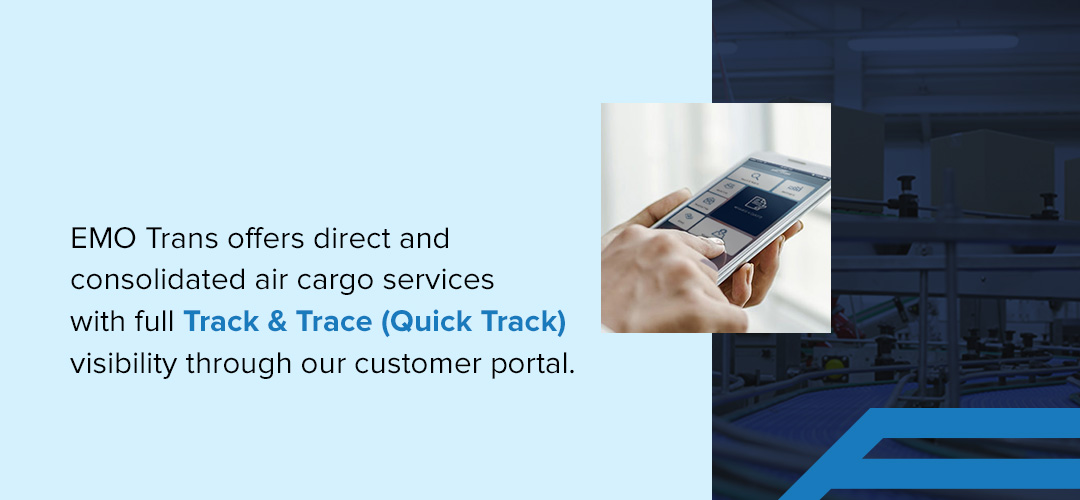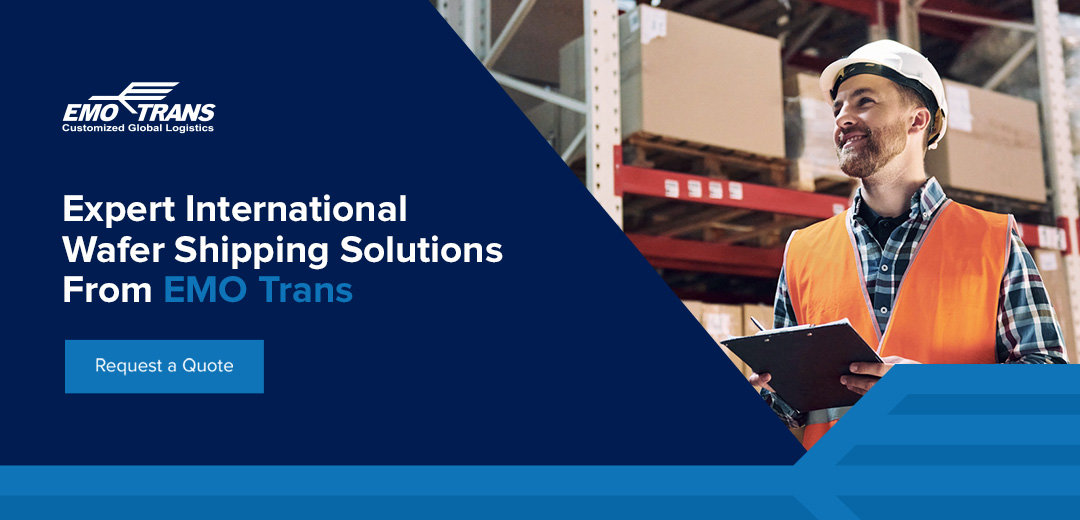
Silicon wafers are a fragile, valuable component used widely in manufacturing. They are often used as the building blocks for chip fabrication, flight computers and dozens of other sophisticated devices. Protection and precision are critical for shipping wafers — changes in vibration or temperature can quickly lead to failure in an entire shipment.
Anyone shipping silicone wafers must go beyond protective packaging to create an all-encompassing process for transportation. Shippers should balance transport type, customs and warehousing to protect their products.
Here’s what it takes to make silicon wafer shipping run smoothly.
Why Shipping a Wafer Is A Delicate Process
Shipping wafers is not like shipping standard freight. They are made from silicon ingots. They’re sliced off into extremely thin discs that range in thickness from millimeters to tiny microns. These semiconductors are static-sensitive, brittle and prone to contamination. Any temperature changes, airborne particles or physical stress can lead to damage. Wafers must be handled with extreme care to avoid ruined stock.
With so many hazards, wafers need specialized logistics, cleanroom-compatible packaging and route optimization to minimize handling. Additionally, shippers must navigate export, dual-use and import regulations around wafers — all of these factors create a delicate wafer shipping process.
How Are Silicon Wafers Shipped?
Silicone wafers are shipped in specialized packaging and must follow tightly coordinated routes to avoid damage. From the moment wafers leave the clean room — the controlled production environment — they’re monitored for vibration and contamination. Shippers must use industry-standard carriers to avoid mechanical shock.
Specialized Packaging
Packers place silicone wafers into plastic cassettes, horizontal shippers or clamshell shippers. The exact enclosure depends on the wafer size and primary shipping concern.
Clamshell shippers are great for preventing movement and damage, while horizontal shippers reduce particle generation. After being packed in a shipper, the wafers are put into antistatic, clean room-certified containers. The containers are vacuum-sealed, cushioned and barcoded to ensure traceability.
Careful Transit
After packing, wafers are shipped to their destination by air, boat or vehicle. Each route is evaluated and prequalified to ensure wafers are safe during transit.
Shippers must assess routes for shock risk, temperature stability and customs clearance. The longer and more variable the route, the higher the chances of wafer damage.
Silicone wafers also need to have airtight documentation. International shipments are subject to trade compliance regulations and export controls.
Wafer Delivery Options
There are several shipping options for silicon wafers. Selecting the right method is essential to ensure wafers have a fast, low-touch, temperature-stable journey. Air, ocean and overland shipping all play a role in getting wafers where they need to go.
Air Freight
Air freight is an excellent, if more expensive, method of wafer delivery. Aircraft are faster than boats, see less handling and provide the climate control needed for safe shipping. Plane travel reduces vibration, temperature swings and moisture so your wafers can remain safe.

EMO Trans offers direct and consolidated air cargo services with full Track & Trace (Quick Track) visibility through our customer portal. Choose from express air options and scheduled groupage flights that preserve quality while sticking to your budget.
Ocean Freight
Overseas silicon wafer transport is a viable option, but this method has some important considerations. Wafers need specialized containers and careful packing to make boat transport practical.
Ocean freight can work for high-volume, less time-sensitive shipments. However, the longer transit time and increased exposure to handling, humidity and regulatory checkpoints can be a concern for silicon wafers. They need extra protective measures and careful planning to keep everything in good condition.
Overland Freight
Overland transport is critical for the final mile of wafer delivery. Once the plane or boat arrives, full truckload or less-than-truckload carriers take the wafers to the clean room. They need to load wafers carefully, accounting for speed, vibrations and temperature to protect cargo. Depending on the packaging and volume, wafers may need specialized truck transport.
How Well Does Packaging Protect Wafers?
Packaging is critical for silicone wafer defense. A well-engineered packing system protects wafers from contaminants, moisture, static and vibration. Packing must be multi-layered and combined with careful handling and route optimization.
Standard wafer packaging will often have at least three layers:
- Primary: Wafer shippers or front openings of unified pods (FOUPs). This layer holds the wafers securely to avoid movement.
- Secondary: Then, the primary layer is put into secondary packaging. This includes antistatic bags or vacuum-sealed containers to prevent contamination and outgassing.
- Tertiary: Finally, the wafers are placed in cushioned, tamper-resistant outer boxes with impact indicators. The third layer absorbs shocks and prevents further damage during shipping and handling.
Packaging will vary by wafter size and design. Polished, bare and patterned wafers may have different packaging based on their primary concerns. The most important part of packaging is making sure the wafers are well-protected during their long journey.
What Does It Cost to Ship a Wafer?
Wafer shipping costs vary depending on several factors. Shipment size, distance and handling requirements all affect the cost. The longer the distance and the higher the transport demands, the more expensive shipping will be.
Silicone wafers are typically shipped in lots to offer the per-wafer cost. Total expenses after all packaging, shipping and insurance can range from hundreds to thousands of dollars.
Here are the factors that affect your wafer shipping expenses:
- Transportation method: Air freight is the fastest mode but the most expensive. Ocean freight reduces costs but requires stronger packaging and longer shipping times.
- Packaging materials: FOUPs and specialized packaging increase material costs but protect wafers from damage during shipping.
- Compliance: International shipments often involve licensing, documentation and customs clearance fees. Working with an experienced shipper can take booking and compliance work out of your hands.
- Insurance: Shippers must pay for insurance to protect their shipment. Silicone wafer shipments are high value — you need insurance to make sure your investment is secure.
Expert International Wafer Shipping Solutions From EMO Trans
Shipping silicone wafers safely requires more than just good packaging — it demands a logistics partner who understands precision cargo. EMO Trans offers ISO-certified, end-to-end solutions tailored to your shipment needs. With over 50 years of experience and a dedicated project logistics team, you can count on us to move high-value, sensitive freight safely.
As a certified IACC and AEO provider, you can trust us to maintain compliance and attention to detail for all shipments. With EMO Trans’ customizable customer portal, you can request quotes, track shipments and view real-time analytics in one place. Partner with EMO Trans and get a logistics partner dedicated to supporting your supply chain. Request your quote online today!

